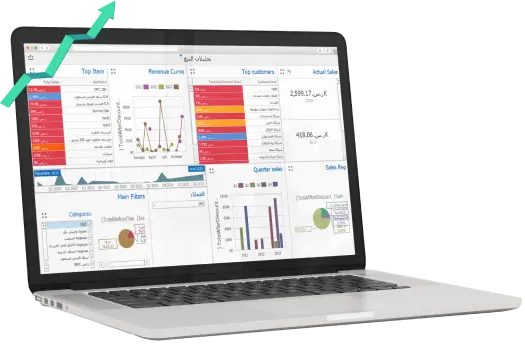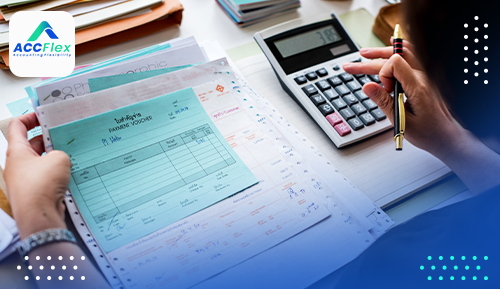The term capital operations express the acquisition of long-term assets, as well as obtaining long-term sources of financing. Long-term assets express the group of productive and non-productive elements that make up the same economic entity, including lands, buildings, machinery, equipment, and supplies...etc., and they are called in the language of accountants the elements of fixed assets. It is also called in the language of economists the factors of production, and these operations are considered the first building block in the establishment of the economic entity. These operations continue with its continuity and lapse with its expiration, and these operations are usually financed through long-term sources of financing, such as self-capital or long-term borrowing or both, and therefore capital operations always have two sides, namely financing and investment operations, and they are called capital operations.
The accounting concept of capital operations
Are those operations related to the purchase of fixed assets and long-term investments, which help the organization to carry out its basic activities for which it was established, and also help the organization to achieve its productive, operational, and revenue objectives, and are not acquired for the purpose of resale, but with the objective of achieving continuous economic returns by continuing its productive life.
• Capital operations in the initial investment
It is self-evident when deciding to invest such as establishing a factory, it is necessary to determine the initial capital operations that reflect the components of the factory, such as land, building, machinery, production equipment, cars, devices, computers, fixtures, and furniture, these investments are called uses of funds, and it is obvious that funding sources are provided for these investments exactly equal in value. If the total of these investments is 200,000 pounds, then it is necessary to find sources of funding worth 200,000 pounds. These sources are divided, as we explained before, into two main types, namely, financing Self-finance, and borrowing, and some of these investments may be provided in kind, such as providing some of these assets such as land.
Practical example: The Arab Company for Production and Manufacturing was established with a capital of 4,000,000 pounds, and the investment elements were as follows
Land 150,000
Buildings and equipment 700,000
machinery and equipment 800,000
Furniture 200,000
Cars 600,000
Computers 100,000
Initial working capital
400,000 merchandise stock
100,000 cash in the bank
The goods were financed by deferred purchase from the suppliers
accounting treatment
To Sundries:
1,500,000 lands
700,000 buildings and equipment
800,000 machinery and equipment
200,000 Furniture
600,000 cars
100,000 computers
100,000 cash in the bank
400,000 Stock
To Sundries:
4,000,000 Capital
400,000 suppliers
• Capital operations during the life cycle of the organization
Capital operations are usually carried out during the life cycle of the organization, starting from the establishment stage, in which the required fixed assets are purchased as components of the project’s ability to produce and operate, and then in the operating stage, such as adding and excluding fixed assets, and also increasing or decreasing the capital, then in the liquidation stage In it, all long-term (non-current) assets are liquidated as well as circulating, so the capital operations extend from the beginning of the project establishment stage, then the operating stage, until the liquidation stage.
• Capital operations and capitalization of expenditures
The concept of capitalization of expenditures expresses the transfer of expenses incurred in order to acquire assets so that they are ready for use. It also expresses those expenses that are spent on the asset and that lead to the extension of the life of the asset or the expenditure of which results in an increase in the production capacity of the asset. As an example, if the organization purchases a new motor for one of the cars or performs an overhaul for the car’s motor, the cost of buying the motor or the cost of the overhaul is considered a capital expense added to the cost of the fixed asset and this capitalized expense is depreciated, but if the expense expresses a periodic maintenance expense such as the expenses of oils, grease and parts Consumed spare parts and fuel, these expenditures are considered revenue expenditures or current expenditures that bear a burden on the revenues of the financial period.
• Financing Operations
The sources of funds are divided in terms of terms into short-term sources of funds and long-term sources, and the description of “financing operations” is usually not given to short-term financing operations and they are called “current liabilities” such as term purchases from suppliers, and the term for settlement is usually less than a fiscal year As for long-term funding sources, such as long-term borrowing from credit houses, as well as issuing bonds, this type of obligations is usually settled during more than one financial period, as well as increasing the capital through the issuance of shares, or transferring part of the equity to the capital. This is called the issuance of bonus shares, in all of these operations are considered as sources of obtaining funds or sources of financing.
If one of the joint-stock companies issued 10,000 shares, the nominal value of the share was 500 pounds, it got a one-time payment at the Commercial International Bank, and it also issued 3000 bonds, the nominal value of the bond was 850 pounds, with a fixed annual interest of 15%. The bonds are paid in addition to interest for three years at the end of each year received at once by CIB, and it obtained a cash loan from Banque Misr at a compound interest rate of 10% per annum on the decreasing value of the loan at the end of each year, the proof of these operations in the company's books is as follows:
- Proof of issuance of shares
The value of the issued shares = the number of shares x the nominal value of the share
= 10,000 shares x 500 = 5,000,000
Prove with the following entry
5,000,000 from CIB
500,000 to share capital
Proof of bond issuance
The value of the bonds issued = the number of bonds x the face value of the bond
= 3000 bonds x 850 pounds = 2550.000
Obtaining a bond loan is evidenced by the following entry:
2550,000 from CIB
2550,000 to the bond loan
Proof of the outstanding part of the bond loan for the first period
850,000 of bond loan
850,000 to due from bond loan
Annual interest = 2550.000 x 15% = 382.500
When proven at the end of each financial period
382.500 from Debit Interest (bond loan interest)
382.500 to Outstanding bond loan interest
Proof of payment of the outstanding portion of the bond loan
850.0000 due from bond loan
850.00 to CIB
Proof of payment of interest due for the financial period
382.500 from Outstanding bond loan
382.500 to CIB









